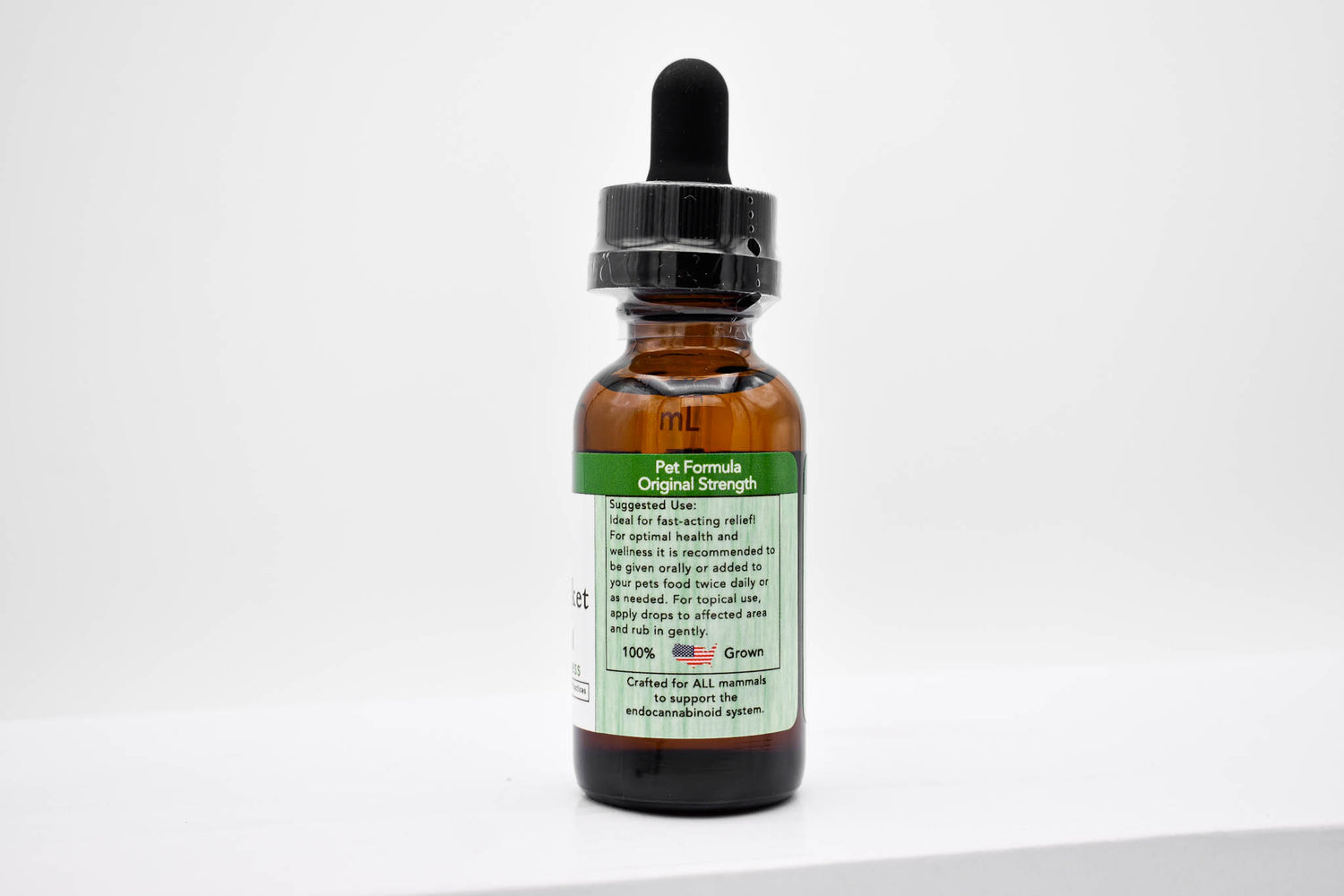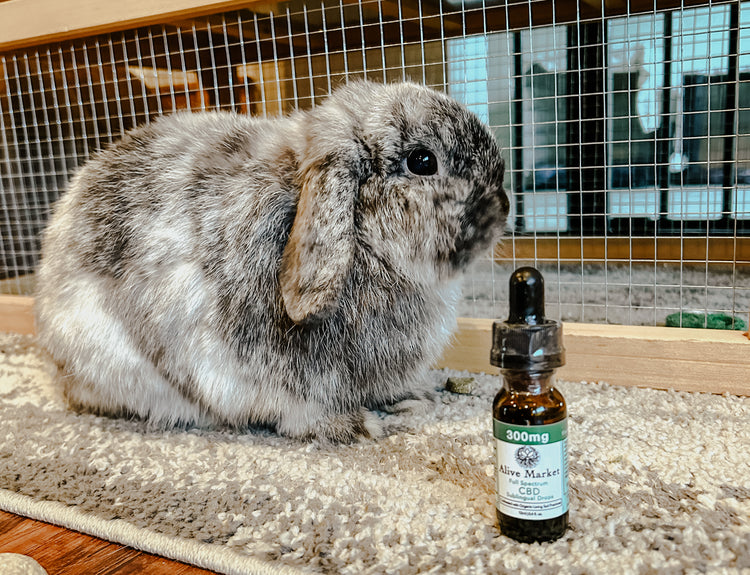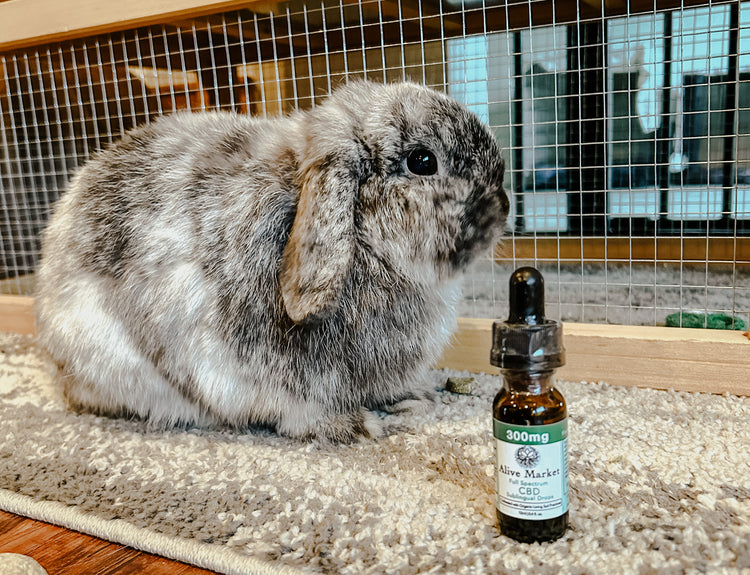It's not uncommon to catch your furry companion nibbling at its own tail. While this might seem like an amusing quirk at first, tail-biting in dogs can signal underlying issues that shouldn't be overlooked. Our four-legged friends often communicate through their behaviors, and when it comes to incessant tail-chewing, there's more to the story than meets the eye.
In this article, we'll delve into the world of dogs biting their tails, uncovering the diverse reasons behind this behavior and home remedies for dog biting tail. Whether it's triggered by pesky pests, allergies, anxiety, or skin troubles, understanding the root causes is crucial for your pet's happiness and well-being. As responsible pet owners, it's up to us to decode their actions and take the necessary steps to address any discomfort or distress. So, let's embark on this journey to decode the tail-biting tale and ensure our furry friends enjoy their lives to the fullest.
Understanding Dog Tail Biting

Dog tail biting, also known as dog's tail chasing or tail chewing, refers to the repetitive and often compulsive behavior of a dog tail biting habit, chewing, or a dog chasing its own tail. This behavior can range from occasional playfulness to a persistent and obsessive habit. While a certain amount of tail-chasing can be normal, especially among puppies exploring their bodies and surroundings, excessive or compulsive tail-biting is a cause for concern.
Dog-biting tail can manifest in various ways, including:
Chewing: Dogs may bite or gnaw at their tails, sometimes causing injury or irritation to the tail area.
Chasing: Some dogs might chase their tails in circles, trying to catch or nip at them.
Obsession: In more severe cases, dogs can become fixated on their tails, paying little attention to their surroundings or other activities.
Causes of Dog Biting tail

Several factors can contribute to a dog's tail-biting behavior:
Physical Discomfort: Dog biting could be a response to physical discomforts, such as skin irritation, itchy skin, allergies, or parasites like flea bites and ticks.
Psychological Factors: Stress, anxiety, and boredom can drive dogs to engage in compulsive behaviors like dog chewing.
Attention-Seeking: Some adult dog may bite their tails to get attention from their owners, especially if they've received a positive reaction in the past.
Underlying Medical Issues: Certain medical conditions, such as anal gland problems or neurological disorders, might contribute to tail-biting behavior.
Breed Predisposition: Certain breeds are more prone to obsessive behaviors, including tail chasing.
Lack of Stimulation: Dogs that aren't adequately exercised or mentally stimulated may resort to dogs bite out of boredom. dog owners should direct dog's teeth to mind stimulating chew toys to fight boredom.
Why Address dogs bite habit?

While dogs bite might initially seem harmless or even amusing, it's essential to address this behavior for several reasons:
Injury Risk: Excessive dogs bite can lead to skin damage, sores, or infections, which can cause discomfort and injured tail pain for your dog.
Quality of Life: Compulsive behaviors like a dog biting tail can indicate underlying stress or anxiety, affecting your dog's overall well-being and quality of life.
Underlying Issues: dog bite might be a symptom of larger issues, whether physical or psychological. Addressing the behavior can help uncover and manage these root causes.
Prevent Reinforcement: If dogs tail biting is attention-seeking behavior, not addressing it can inadvertently reinforce the behavior by providing the dog with the attention it craves.
By understanding the causes and potential consequences of tail biting, you can take proactive steps to help your canine companion find relief, comfort, and a happier, healthier life.
Consulting a Veterinarian

When facing the perplexing behavior of a dog's tail-biting habit, seeking the guidance of a veterinarian should be your first step. While home remedies and insights can be valuable, a professional opinion is essential to ensure your dog's well-being. Here's why consulting a vet is crucial:
Importance of Veterinary Consultation
Accurate Diagnosis: Veterinarians possess the expertise to accurately diagnose the root cause of tail biting. Their training allows them to differentiate between behavioral issues, medical conditions, and underlying health concerns and therefore minimize or stop biting.
Tailored Recommendations: Every dog is unique, and a vet can provide personalized recommendations based on your dog's age, breed, medical history, and current condition. This tailored approach ensures the most effective treatment plan.
Medical Intervention: If tail biting is linked to a medical issue, such as bacteria infected tail, infections, allergies, or a dog's skin problems, a vet can provide appropriate medical treatments, prescriptions, or interventions to address the problem directly.
Behavioral Insights: If anxiety, stress, or other behavioral factors are contributing to tail biting, a veterinarian can offer insights into behavioral modification techniques and recommend calming strategies.
Recognizing When Professional Help is Needed
While it's always a good idea to consult a veterinarian, there are specific instances where professional help is especially crucial:
Persistent Tail Biting: If your dog's tail biting is persistent, frequent, or escalating, it's a clear sign that something more serious might be at play. A vet's assessment can help uncover the underlying cause.
Physical Symptoms: If tail biting has resulted in skin damage, sores, bleeding, or signs of infection, it's vital to seek immediate veterinary attention to prevent further complications.
Changes in Behavior: If your dog bites are accompanied by changes in behavior, appetite, energy levels, or other unusual symptoms, it could indicate a more complex health issue that requires professional evaluation.
Puppy vs. Adult Behavior: While occasional tail-chasing can be typical in puppies exploring their bodies, persistent dogs chewing tails in adult dogs is more concerning and warrants professional evaluation.
In conclusion, consulting a veterinarian is paramount when dealing with the issue of tail biting in dogs. Their expertise will guide you in determining the best course of action, whether it involves medical treatment, behavioral modification, or a combination of both. Remember that your dog's well-being is the top priority, and seeking professional help will ensure that you're taking the right steps to address their needs effectively.
Home Remedies for dog biting tail
By exploring these home remedies for dog biting tail, you're taking proactive steps to address the various causes of tail biting and provide your dog with the comfort and relief they deserve. Remember, every dog is different, so a combination of these approaches might work best. Always monitor your dog's response and consult your veterinarian if you have any concerns. here are some of the home remedies for dog biting tail:
Regular Grooming

the significance of keeping your dog clean and well-groomed:
Regular grooming for your furry friend is more than just keeping your him looking stylish – it's an essential part of maintaining their overall health and comfort. Proper grooming helps prevent mats, tangles, and skin issues that can contribute to tail biting. Regular brushing not only keeps their coat shiny and free of debris but also promotes healthy circulation and reduces the risk of irritation.
Tips for proper grooming practices to prevent irritation:
Brushing: Depending on your dog's coat type, brush them regularly to remove loose fur and prevent tangling.
Bathing: Bathe your dog using a gentle, pet-friendly shampoo suitable for their skin type. Avoid over-bathing, as it can strip the skin's natural oils.
Trimming: If your dog's tail fur is long, consider trimming it to a manageable length to reduce the risk of tangles.
Checking for Parasites: Regularly inspect your dog's tail area for fleas, ticks, or any signs of skin irritation.
Flea and Tick Prevention

Natural methods and products to prevent fleas and ticks:
Natural flea and tick prevention methods can be effective in keeping these pests at bay. Essential oils like lavender, cedarwood, and citronella can act as natural repellents. However, ensure to dilute them properly and consult your vet before using them on your dog.
The use of flea combs and natural repellents:
Regularly combing your dog's fur with a fine-toothed flea comb can help catch fleas and ticks early. Additionally, look into natural flea and tick repellents, such as herbal sprays or collars infused with essential oils.
Allergen Management

The importance of identifying and addressing allergens:
Identifying allergens that could be triggering your dog's tail biting is a crucial step in providing relief. Allergens could be present in their food, environment, or even certain grooming products.
Hypoallergenic diets and cleaning routines minimize allergen exposure:
Consult with your vet about switching to a hypoallergenic diet that eliminates potential allergens. Maintaining a clean living environment, using hypoallergenic bedding, and avoiding harsh chemicals can also help reduce allergen exposure.
Environmental Enrichment

Engaging activities can help alleviate boredom and anxiety:
Engaging your dog's mind and body can significantly reduce the likelihood of boredom-induced tail biting. Activities that encourage problem-solving and physical exercise can have a positive impact on their overall well-being.
Ideas for interactive toys, puzzles, and mental stimulation:
Invest in interactive toys, treat-dispensing puzzles, and engaging games that challenge your dog mentally. Incorporate daily walks, playtime, and training sessions to keep them mentally stimulated and content.
Calming Techniques

Methods to reduce anxiety, such as aromatherapy and gentle massage:
Aromatherapy using dog-safe essential oils like lavender or chamomile can have a calming effect. Gentle massages can help soothe your dog and strengthen your bond.
The potential benefits of using calming pheromone diffusers:
Calming pheromone diffusers, available in the form of plugins or collars, release pheromones that mimic a mother dog's comforting presence and can help alleviate stress and anxiety.
CBD for Stress and Discomfort
CBD (cannabidiol) can help alleviate stress and discomfort in dogs:
CBD is known for its potential to promote relaxation and reduce anxiety in dogs. It can also have anti-inflammatory properties that could benefit dogs with skin discomfort.
Potential anti-anxiety and anti-inflammatory properties:
CBD interacts with the endocannabinoid system, which plays a role in regulating mood, stress, and inflammation. This interaction can potentially help dogs find relief from both anxiety and discomfort.
Note the importance of using CBD products specifically designed for pets and consulting a vet before use:
Alive Market CBD Oil For Pets
Always choose CBD products formulated for pets, as human products may contain ingredients that are unsafe for dogs. Before introducing CBD to your dog's regimen, consult your veterinarian to ensure it's suitable for your dog's specific needs and health status.
Topical Treatments

Safe and soothing topical treatments for skin irritation:
Consider using vet-approved topical treatments that provide relief from skin infection and irritation. These treatments could include soothing balms or ointments specifically designed to alleviate discomfort.
Natural remedies like aloe vera or chamomile:
Natural remedies like aloe vera gel or chamomile can have a soothing effect on irritated skin. Always ensure that any products you use are safe for dogs and free from harmful additives.
E-collar or Protective Coverings

Use of e-collars or protective coverings to prevent tail access:
To prevent further tail biting and allow healing, an e-collar (cone) or protective covering can be used. These prevent direct access to the tail, minimizing the risk of further irritation.
The need for proper fit and comfort:
When using an e-collar or protective covering, ensure it's properly fitted to prevent discomfort or obstruction of movement. Your dog's comfort is paramount during this healing process.
Monitoring and Progress: Tracking Your Dog's Well-Being
As you embark on the journey of implementing home remedies to address your dog's tail biting, one of the key aspects is closely monitoring their response and progress. Just as every dog is unique, their reactions to these remedies can vary. By vigilantly observing their behavior and condition, you can make informed decisions and ensure your furry friend's comfort and health.
The importance of monitoring your dog's response to the remedies:
While the ultimate goal is to see positive changes, it's important to remember that improvements might take time. Keep a watchful eye on your dog's demeanor, tail-biting behavior, and overall comfort level. Look for signs of reduced itching, less restlessness, and a more content disposition. Positive changes can manifest in subtle ways, such as fewer instances of tail biting or a generally calmer demeanor.
Track improvements and consult a vet if the behavior persists:
Documenting changes is essential for assessing the effectiveness of the remedies. Create a journal or record with dates, notes, and observations about your dog's behavior. This serves as a tangible reference point to determine if the chosen remedies are making a difference.
However, if you notice that your dog's tail biting persists or worsens despite your efforts, it's crucial to consult your veterinarian promptly. Persistent tail biting could be an indication of an underlying health issue or behavioral concern that requires professional evaluation and intervention. Your vet's expertise will help guide you toward appropriate adjustments to your approach, ensuring your dog's well-being remains the top priority.
Conclusion: Finding Comfort and Care for Tail-Biting Dogs
In our exploration of tail-biting behavior in dogs, we've uncovered a range of effective home remedies for dog biting tail to alleviate discomfort and promote well-being. From regular grooming and flea prevention to managing allergens and providing environmental enrichment, these remedies address both physical and emotional triggers.
Remember, consulting a veterinarian is essential for accurate diagnosis and tailored guidance. Their expertise is invaluable in navigating the complexities of your dog's behavior and health. Additionally, considering natural options like CBD products designed for pets could offer relief from stress and discomfort, but always consult your vet before introducing new supplements.
By embracing these remedies and closely monitoring your dog's response, you're actively contributing to their happiness and quality of life. Through your commitment, your loyal companion can find comfort, peace, and relief from the challenges of tail biting.





























